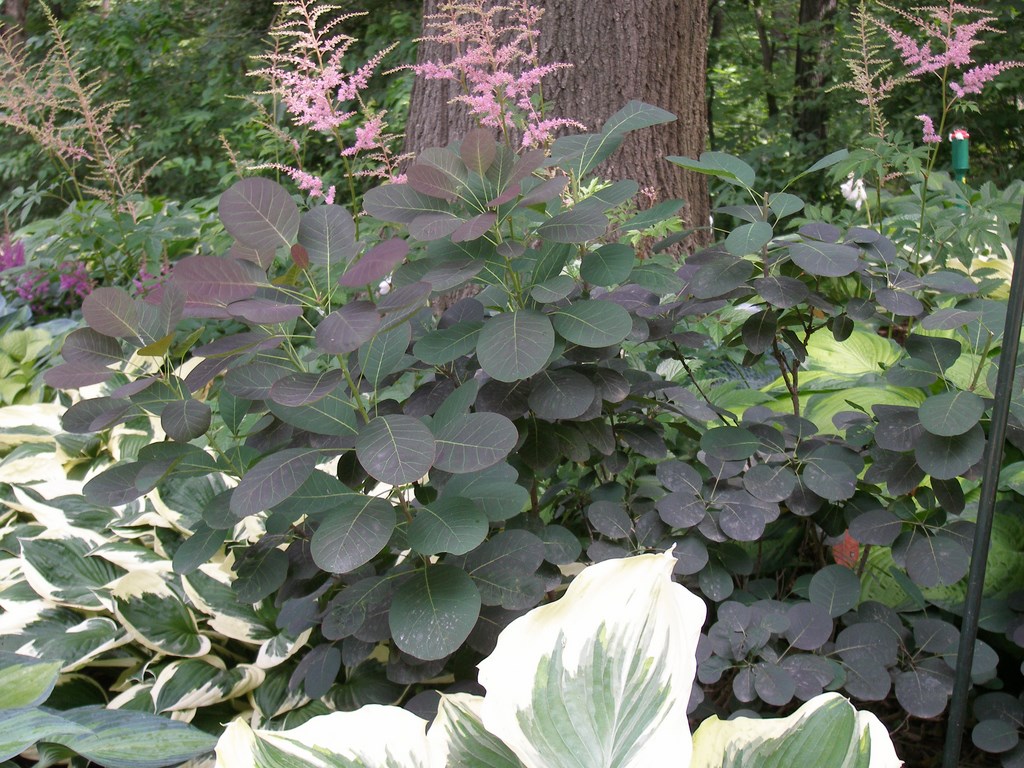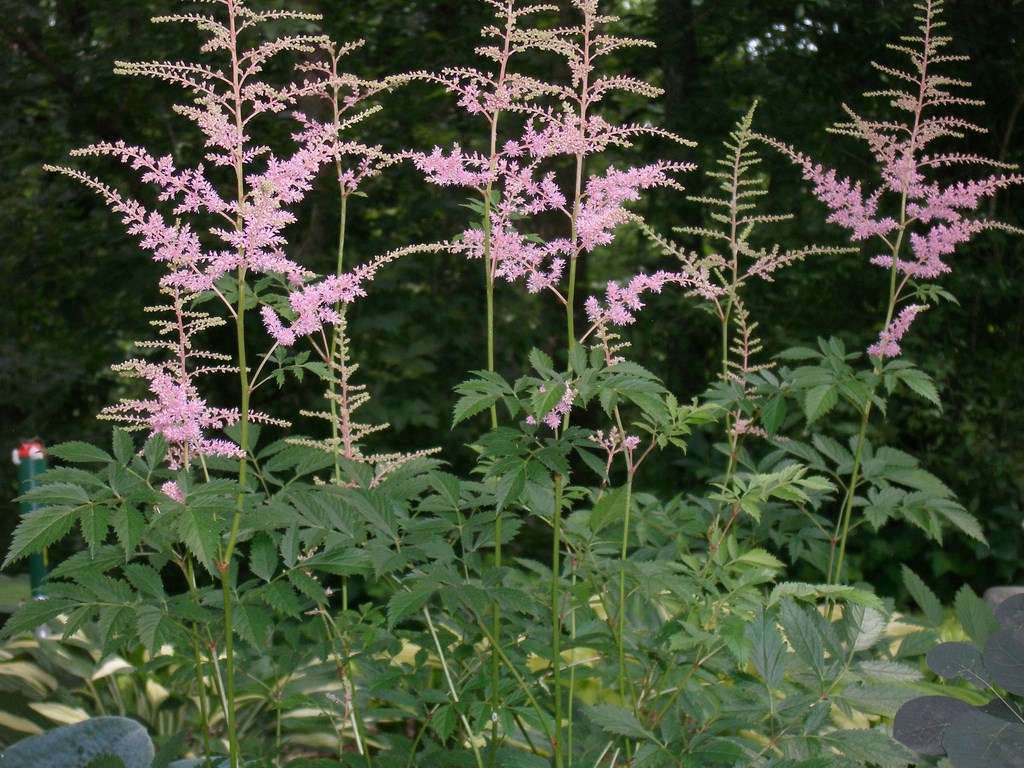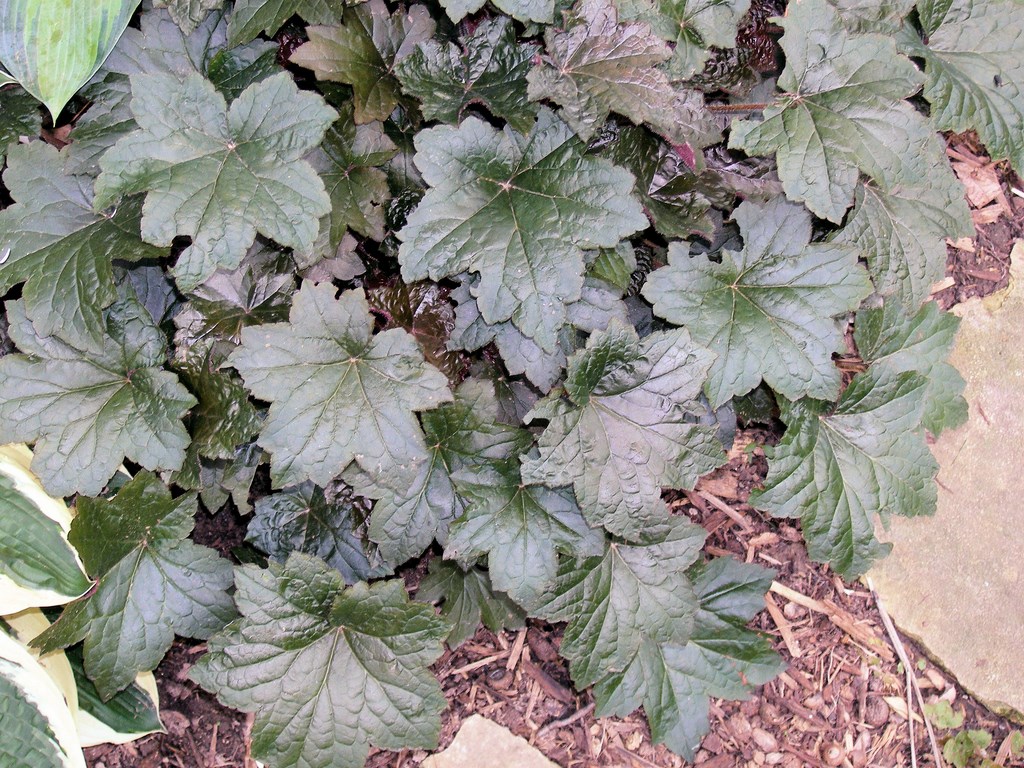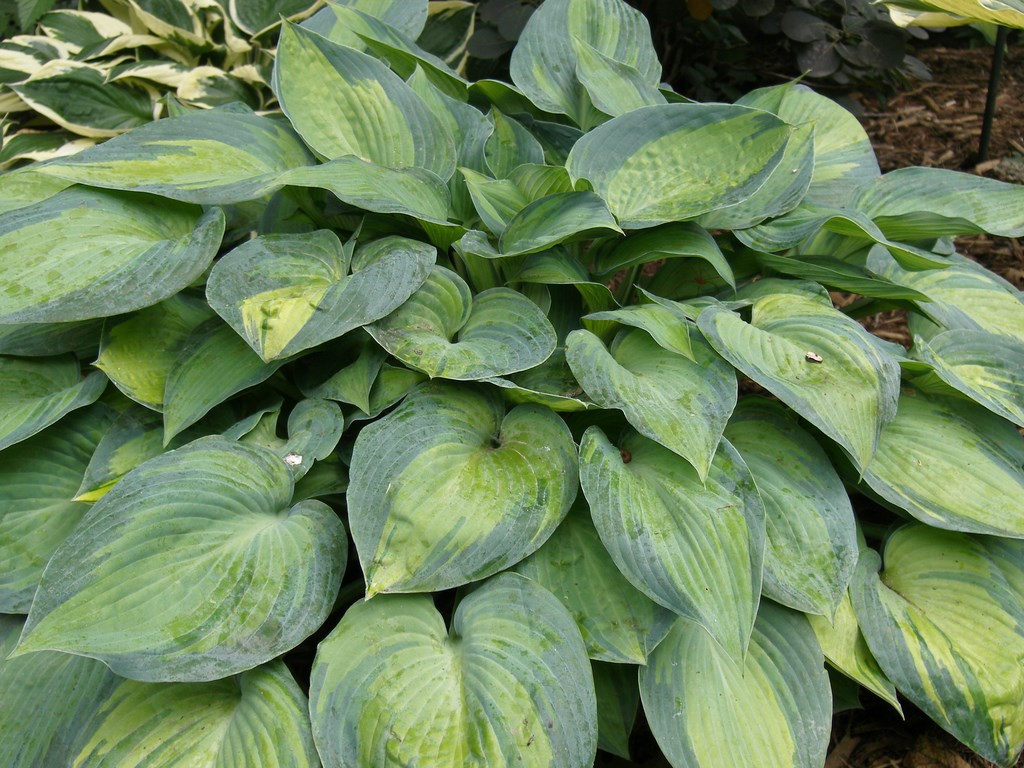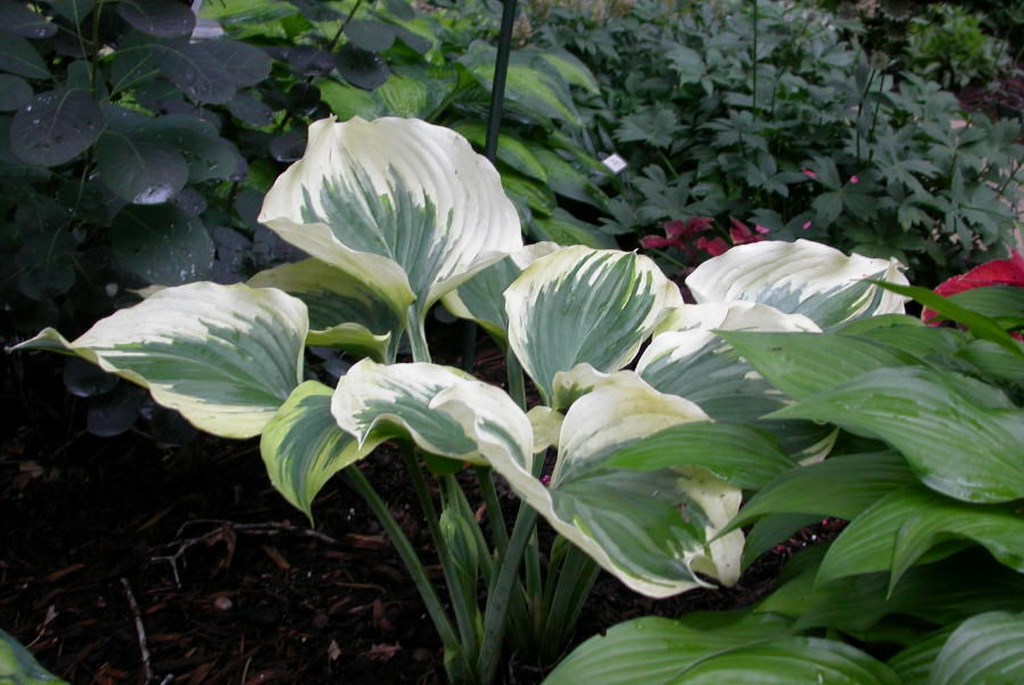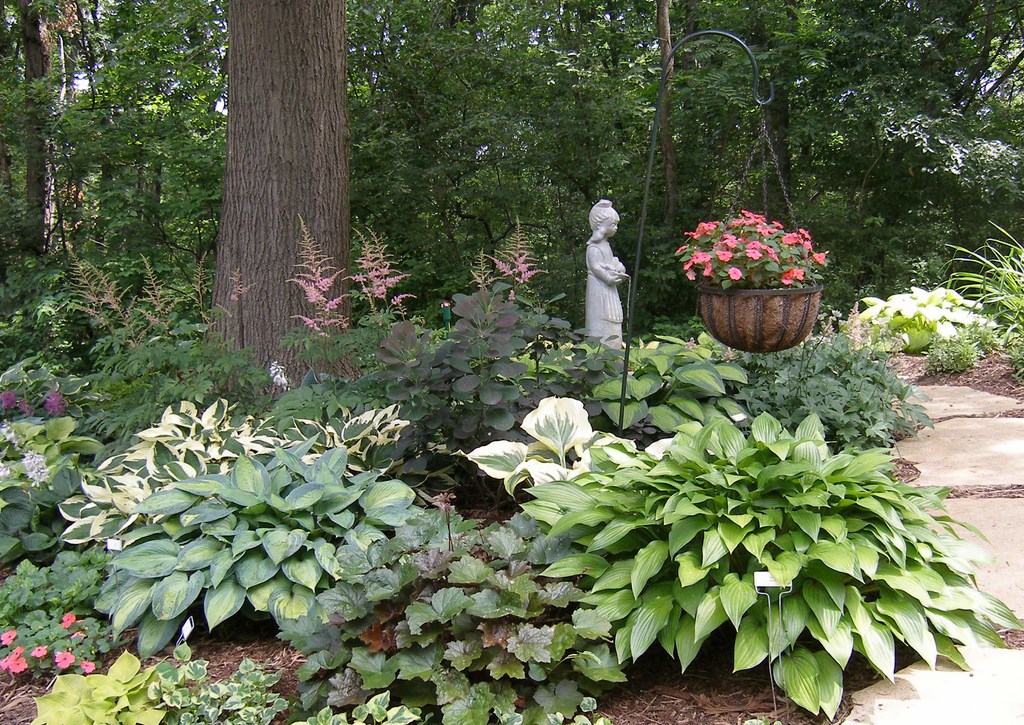Combining Solo Players
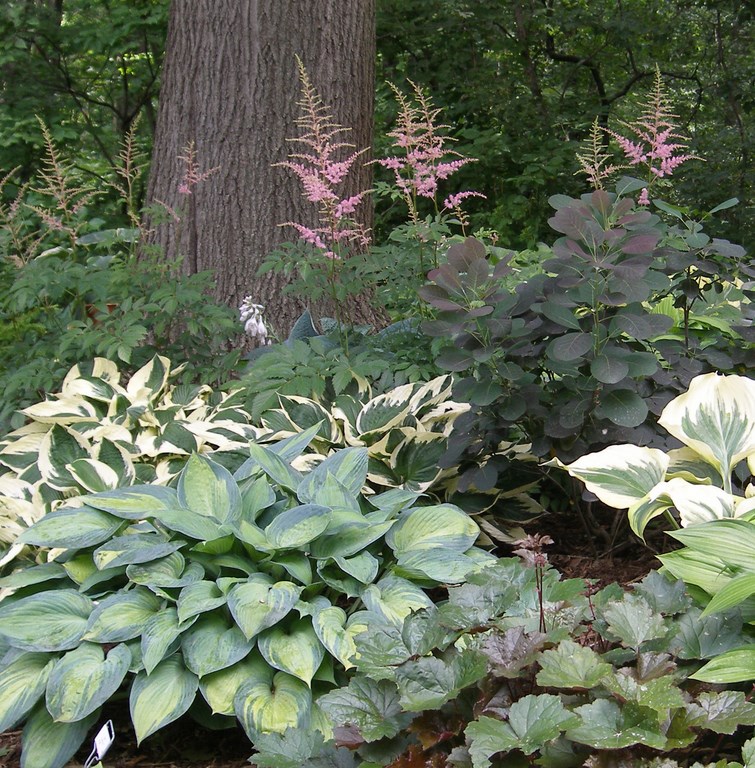
As the possibilities of learning more and creating unique gardens take hold, the give and take of landscape design can become a kind of addiction both for designer and client.
I have experienced this phenomenon again and again, but only occasionally has it been as pronounced as in the case of the shade garden featured here: It’s a wonderful example of how this constant drive to create new and beautiful plant combinations and visual planes can grip any landscape professional.
A dedicated gardener, my client has added to and subtracted from my original design through the years, but the work we started together has always been enhanced by these efforts. This particular garden has taught me a great deal about shade-loving plants as I’ve worked on and observed it over time. I’m happy to say that my own garden is at a point where I’m finally able to borrow ideas and develop them for my own viewing pleasure.
But planting a shade garden is always a challenge, a constant struggle to maintain the balance between light and shade that enables shade-loving plants to thrive. Moreover, it’s tough to develop plant palettes with enough variety and interest that they address all the needs of my clients and the demands of various sites – a factor that keeps me searching for new and different selections as well as interesting ways to combine them.
A PERFECT SETTING
This particular garden contains many specimens, but repetition is carried out through the use of shapes, colors and textures rather than multiple appearances of specific varieties. This can be most successfully achieved in a shade garden with Hostas, I think, because they are low to the ground and have a spreading, stem-less form no matter whether they are, small or large, with narrow or wide leaves.
| Royal Purple Smoke Bush |
In addition, the range of greens available with Hostas – from yellow-green and green to blue-green – is a way of using the same basic color with marvelous variations. In this case, my client is an active member of a local Hosta society and has a great collection developed with a thorough knowledge of the species.
Another unique characteristic of this garden is its use of shade plants in partial sun and sun plants in partial shade – another sign that I am collaborating with an accomplished gardener. For her, in other words, the required deadheading, trimming, transplanting and watering are a pleasure, not a chore.
| Ostrich Bloom Astilbe |
The encompassing trees have been limbed up and carefully pruned, and some have been removed to let in more light and a larger array of plants. The garden itself is made up of vignettes that flow from one to another, with connections made by the use of a color, a shape or a species. Limestone terraces and paths and occasional containers or garden ornaments add to the overall quality of the spaces.
Unfortunately, deer are a presence in the garden, but my client has managed to grow Hostas and Daylilies using deer zappers, Liquid Fence, her corgis and diligence. The use of many deer-resistant plants has allowed her to concentrate all her energies on protecting these two plants (although only the Hostas figure into this discussion).
| Palace Purple Heuchera |
Although any of these plants by themselves are unique and interesting, it’s the combination of the group, all together, that makes this such an attractive garden. It’s simply amazing how a well-designed shade garden can create so much visual interest in so many subtle ways.
MAKING CHOICES
The combination on display here is remarkable because two main colors alone carry the design – that is, purple and green (with related pink and blue, respectively) – in relationships that use analogous colors rather than complementary ones.
Royal Purple Smoke Bush (Cotinus coggygria ‘Royal Purple’) anchors the combination. In Zone 5, this deer-resistant plant will experience some dieback after winter, but for a large shrub in a perennial garden, this characteristic is not really a drawback. The wonderful purple color of the leaves and the rosy-purple color of the inflorescence form a strong background, and in partial shade the leaves are a greenish-purple.
| June Hosta |
Ostrich Bloom Astilbe’s (Astilbe x arendsii ‘Ostrich Bloom’) spiky, tall form contrasts with the round shape and leaves of the young, pruned Smoke Bush and reaches above and beyond its height and diameter. Another deer-resistant plant, the plant’s pink color creates a mellow combination with the purple color of the smoke bush in early summer, while its deeply cut foliage continues to enhance the garden later on, after the spent blooms have been clipped off.
Continuing the color scheme, the leaves of Palace Purple Heuchera (Heuchera americana ‘Palace Purple’) are purplish-green on top with purple undersides. Small and low, this plant grounds the combination with a contrasting, scalloped leaf shape. Like the Smoke Bush, this plant contributes to the design all season long, as we grow it for the beauty of its leaves rather than for its flowers – and there’s also a benefit in its deer resistance.
| Patriot Hosta |
A variety of Hostas form the main and final part of the combination. The June Hosta (Hosta ‘June’) in the front, with the blue margins and light-green centers of its leaves verging on yellow-green, gives stability to the design, while the large, thick leaves lend a sense of weight that anchors the front of the border.
Conversely, the Patriot Hosta (Hosta ‘Patriot’) adds spark to the combination, with its white-margined leaves reaching upward toward the Smoke Bush, as well as balance in its positions on both edges of the grouping. Deer, as we all should know, love to eat Hostas, a fact that keeps the homeowner on her toes.
REAL-WORLD BEAUTY
Beyond clipping the spent flowers of the Astilbe, Hosta and Heuchera, cutting back foliage after killing frosts and pruning away dead branch tips of the Smoke Bush and its spent inflorescence in the spring, this plant combination requires only moderate care. Regular watering to replace moisture used by the large tree and to supply water to the planting zone is all it takes to keep the garden looking fresh. To get ready for the growing season, all my client does is top-dress the area with compost and refresh the hardwood mulch each spring.
| In this longer view of the shade garden, the plants highlighted in this column make up an composition in which purple and green (and their analogous colors – pink and blue, respectively) carry the design. |
It’s also interesting to note that she has planted under her oak tree by carefully digging between its buttress roots and adding small amounts of soil amendments. Along with using much of the available water, the oak will use the available nutrients. But an oak’s roots run deeper that do those of maples, making successful shade gardening under them a better possibility.
To prevent the spread of oak wilt (common in this area of the Midwest) she prunes the oak in fall or winter. None of this, of course, is too much to ask of a dedicated gardener – and I certainly don’t mind having such a wonderful laboratory for ideas I can apply elsewhere, even in my own backyard.
Judy Nauseef has owned and run Judy Nauseef Landscape Design in Iowa City, Iowa, for the past 16 years, providing landscape design and consultation services as well as installation management for her clients. An active, certified member of the Association of Professional Landscape Designers, she is widely published and is a frequent speaker for garden clubs. She may be reached at [email protected].











